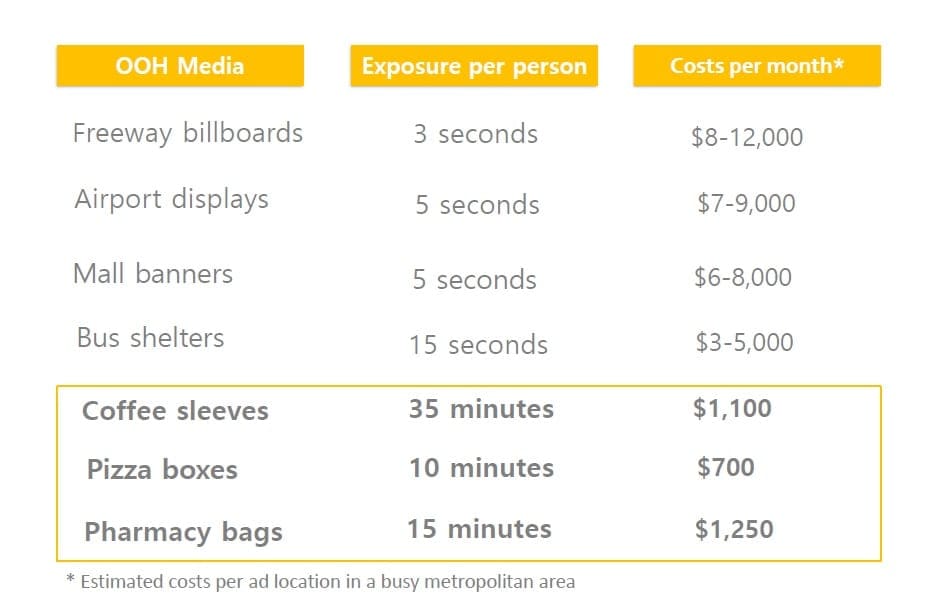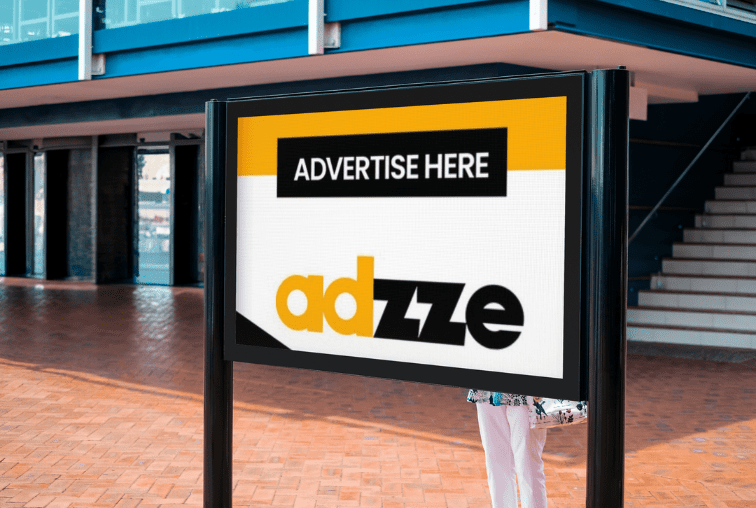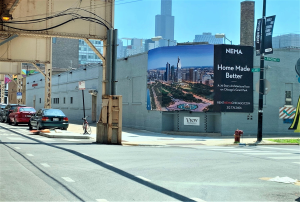Out-of-Home (OOH) advertising has been a staple in marketing strategies for decades, offering the ability to reach broad audiences in public spaces. However, as digital advertising has pushed expectations for precise targeting and measurable results, the need for accountability in OOH campaigns has grown exponentially. Measuring Return on Investment (ROI) in OOH advertising is more than just a buzzword; it’s a necessity for marketers to validate budget allocations and refine strategies.
This comprehensive guide delves into every aspect of measuring ROI for OOH campaigns, providing detailed methodologies, case studies, and actionable best practices for professionals seeking to maximize their investments.
Understanding ROI in OOH Advertising
ROI in OOH advertising measures the financial return generated by a campaign relative to its cost. While the fundamental ROI formula remains the same, the complexities of OOH advertising—such as broad audience exposure and external influences—require nuanced approaches to data collection and analysis.
ROI in OOH advertising is calculated as the net profit generated by the campaign relative to its cost. However, measuring ROI in this domain is complex due to the broader and less direct influence of physical ads compared to digital mediums. Here’s why:
Attribution Challenges: Unlike digital campaigns where clicks and conversions are tracked in real-time, OOH relies on indirect or inferred attribution methods.
Broader Impact: OOH ads often enhance brand recall and awareness over time, complicating the measurement of immediate ROI.
Core ROI Formula
ROI (%) = [(Net Profit – Cost of Investment) / Cost of Investment] × 100
Understanding how to define “net profit” for OOH campaigns depends on the metrics chosen to measure impact—such as brand lift, store visits, or conversions.
Why ROI Measurement Matters
Accountability: Justifying the investment to stakeholders ensures the continuation of effective campaigns.
Optimization: Accurate measurement identifies strengths and areas for improvement, refining future strategies.
Competitiveness: Demonstrating ROI provides a competitive edge in securing budgets and marketing leadership.
Explore our Media Options today and let us help you connect with your audience like never before.
Key Metrics for Measuring OOH Advertising Effectiveness
1. Reach and Frequency
Reach represents the number of unique individuals exposed to the advertisement, while frequency measures how often these individuals see the ad. These metrics establish the campaign’s penetration and repetition, which are critical for brand recall.
How to Measure: Use audience measurement tools like Geopath or Nielsen to gather accurate data. Digital OOH (DOOH) platforms often provide built-in tracking capabilities.
Example: A digital billboard targeting commuters on a busy highway may reach 100,000 unique individuals daily, with an average frequency of five impressions per week.
2. Impressions
Impressions quantify the total number of times an advertisement is seen, including multiple views by the same individual. High impression rates often correlate with increased visibility.
How to Measure: Digital integrations, such as camera-based audience analytics, can track impressions in real time.
Example: A transit ad in a subway station generates 500,000 weekly impressions based on foot traffic data.
3. Engagement
Engagement reflects the interaction or response elicited by the ad, such as social media activity, QR code scans, or app downloads.
How to Measure: Include interactive elements in the ad, such as scannable QR codes or hashtags, to track engagement.
Example: A campaign for a streaming service uses a QR code on bus shelters, resulting in 5,000 app downloads in one month.
4. Conversion Rate
The conversion rate tracks the percentage of individuals who take a specific action after seeing the ad, such as making a purchase or visiting a website.
How to Measure: Use unique promo codes, custom URLs, or geofencing to attribute conversions directly to the campaign.
Example: A retail store offering a 10% discount with a billboard-specific promo code sees 2,000 redemptions, yielding a 2% conversion rate.
5. Ad Recall and Brand Awareness
Ad recall measures how well audiences remember the campaign, while brand awareness assesses the ad’s impact on consumer perception and recognition.
How to Measure: Conduct post-campaign surveys or focus groups to gather qualitative insights.
Example: A post-campaign survey reveals that 70% of respondents recall seeing the ad, with 50% associating it with the advertised brand.
Innovative Methods for Measuring ROI in OOH Advertising
1. Baseline Analysis
Establishing a performance baseline before launching the campaign is essential for accurate comparisons. Pre-campaign data provides a reference point to measure changes in sales, website traffic, or store visits.
Best Practice: Analyze historical data from similar campaigns to set realistic benchmarks.
Case Study: A fashion retailer tracked foot traffic before and after installing digital screens in shopping malls, noting a 25% increase during the campaign.
2. Digital Integration
Integrating digital elements into OOH ads enhances interactivity and enables precise tracking of consumer actions. QR codes, personalized URLs, and social media hashtags connect the physical and digital realms.
Example: A food delivery app’s billboard includes a QR code offering a $5 discount, resulting in 10,000 scans and measurable ROI.
3. Mobile Data and Geofencing
Mobile data provides valuable insights into audience movement and behavior, enabling precise attribution of campaign impact. Geofencing enhances targeting by delivering location-specific content to digital screens.
Example: A campaign for a theme park used geofencing to target families within a 20-mile radius, driving a 15% increase in ticket sales.
4. Surveys and Market Research
Qualitative research through surveys or interviews gauges consumer sentiment, ad recall, and purchase intent. Combining these insights with quantitative metrics offers a holistic view of ROI.
Example: A beverage company conducted exit interviews at a train station where its OOH ads were displayed, revealing that 60% of respondents intended to purchase the product.
5. Attribution Modeling
Attribution modeling assigns credit to various marketing touchpoints, including OOH media, within the consumer journey. Multi-touch attribution provides a comprehensive understanding of the ad’s contribution to conversions.
Example: An automotive brand used multi-touch attribution to evaluate the impact of a citywide billboard campaign on dealership visits, identifying a 20% increase in test drives.
Challenges in Measuring OOH Advertising ROI
1. Attribution Complexity
OOH campaigns often interact with other marketing channels, making it difficult to isolate their impact. Advanced analytics and attribution models can mitigate this challenge.
2. Data Limitations
Access to reliable audience data is crucial but may be restricted by technical constraints or privacy regulations.
3. External Influences
Uncontrollable factors like economic conditions, competitive activity, or seasonal trends can affect campaign performance.
Best Practices for Maximizing ROI
1. Define Clear Objectives
Set specific goals, such as increasing brand awareness, driving foot traffic, or boosting online sales. Clear objectives guide campaign planning and measurement efforts.
2. Leverage Advanced Technologies
Embrace tools like real-time analytics, AI-driven audience insights, and geolocation data to enhance measurement accuracy.
3. Conduct A/B Testing
Experiment with different ad creatives, placements, or messaging to identify the most effective combinations.
4. Partner with Industry Experts
Collaborate with experienced OOH media providers who offer robust measurement capabilities and strategic insights.
Conclusion
Measuring ROI in OOH advertising is both a science and an art, requiring a blend of advanced analytics, creative strategies, and a deep understanding of consumer behavior. By leveraging key metrics, innovative technologies, and best practices, marketing professionals can unlock the true potential of OOH media, ensuring impactful campaigns that deliver measurable results.







